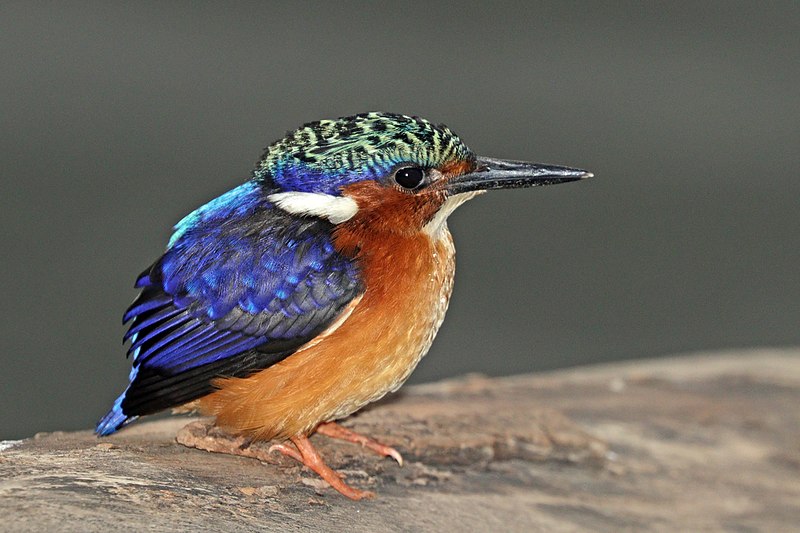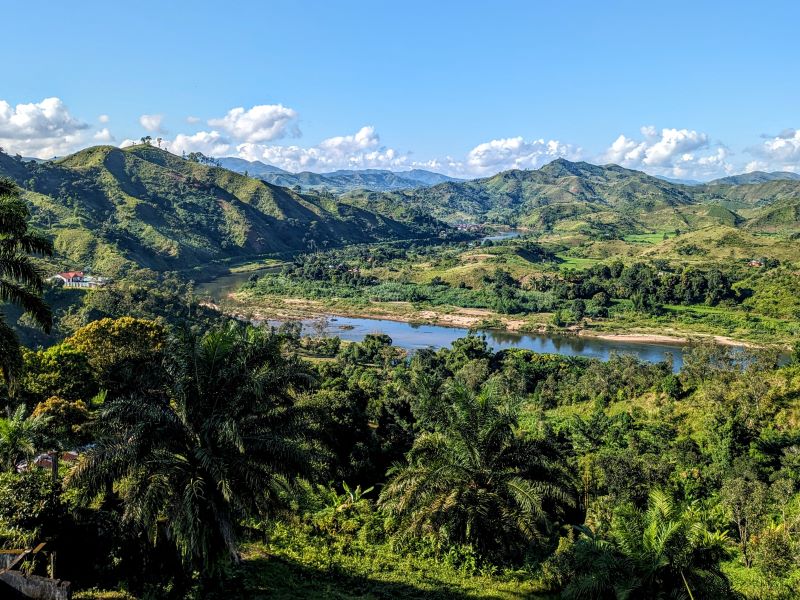Sandrananta River, in Madagascar. Privatemajory, CC BY-SA 4.0, via Wikimedia Commons
From its lush rainforests to its fertile plains, Madagascar, the fourth-largest island in the world, is rich with biodiversity and natural assets. Its fertile soil is ideal for agriculture. 83.2% of its households are farmers, out of a total population of 25.7 million, according to the 2018 general population census. Its forests are home to valuable timber and medicinal plants. It boasts an unparalleled diversity of flora and fauna, much of which is found nowhere else on Earth. Its dry deciduous forests are considered among the most ecologically diverse in the world. The huge island nation, off the southeast coast of Africa, is rich in minerals, including nickel, cobalt, graphite, and precious stones such as sapphires. The potential of Madagascar, often dubbed the “eighth continent,” is undeniable. But beyond it lies a vital question: Can the country fully harness its natural wealth to promote sustainable development and improve the lives of its citizens? Despite its agricultural population, vast fertile land, and immense potential, Madagascar remains one of the poorest countries in the world. It struggles to provide food security for its inhabitants. Worse still, almost one in two children is chronically malnourished, according to the World Bank. In some years, such as 1991 and 2020, the South even experienced famines.
Harnessing Madagascar’s Potential
Madagascar’s potential remains largely untapped due to several socioeconomic and environmental challenges. However, with careful planning and sustainable initiatives, its land could be transformed into a thriving hub for agriculture, ecotourism, and other productive endeavors. To harness the full potential of Madagascar’s resources, the country must address several challenges from governance to infrastructure and sustainability. Here are ways Madagascar can make the most of its rich land:
Agriculture: This is one of Madagascar’s primary economic activities, employing over 80% of its population. The island is famous for a variety of crops, including rice, cassava, coffee, spices, and vanilla (Madagascar produces 80% of the world’s supply). However, the agricultural sector faces several challenges, including outdated farming techniques, a lack of infrastructure, and vulnerability to climate change, which frequently brings droughts and cyclones. Sustainable farming methods like organic agriculture and agroforestry can boost food production while protecting the environment. This will contribute to food security and rural development. Also, investing in modern agricultural practices will not only increase food security but also generate more income through exports.
Ecotourism: Madagascar’s natural wonders, like the iconic lemurs, towering baobab trees, and lush rainforests offer a unique opportunity for sustainable ecotourism development. By promoting responsible tourism practices, the country can attract visitors while preserving its natural beauty and cultural heritage. Ecotourism can generate income for local communities and create jobs in the tourism sector, such as conservation, hospitality, and guiding.

Madagascar malachite kingfisher. Charles J. Sharp , CC BY-SA 4.0, via Wikimedia Commons
Mining: Madagascar is rich in mineral resources like nickel, cobalt, graphite, and precious stones such as sapphires. While mining has contributed to economic growth, it has also raised concerns about environmental degradation and the unequal distribution of wealth. Critics argue that the benefits of mining are not shared equitably among the population. Also, the ethical dilemma of resource exploitation persists: how can we harness these resources without harming local communities, leaving them worse off? One way to achieve this is by enacting stricter regulations for mining companies, ensuring both environmental protection and a fair share of profits for local communities. If managed properly, Madagascar could benefit from its resources without devastating its environment.
Conservation: Madagascar has become home to a unique assemblage of wildlife that makes it one of the most biodiverse hotspots on our planet. Its forests house a wide range of endemic species, many of which are threatened with extinction. Deforestation is ravaging the forests, with over 80% already lost to unsustainable practices like slash-and-burn agriculture, illegal logging, and charcoal production. These harmful activities are not only bad for biodiversity but also make it harder for Malagasy people to make a living, as they ruin the land they depend on.
To combat this, the country must enforce stricter environmental laws and community-led conservation efforts. Investing in reforestation and agroforestry could help in restoring degraded land while providing economic benefits. A sustainable Madagascar starts with conservation. By establishing protected areas and fostering community involvement, the island can safeguard its rich biodiversity and ensure a sustainable ecosystem for generations to come.
Can we make the most of Madagascar’s rich land? It’s possible, but only with a concerted effort from both Malagasy people and international partners. Madagascar has what it takes to thrive: a mix of nature’s best – fertile land, rich biodiversity, and valuable mineral resources. With the right policies and investments, Madagascar can realize its full potential.





